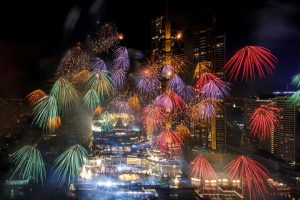A Budget Wise for a Tour to Costa Rica
On 11 August 2020, four members of a single family in Auckland tested positive for SARS-CoV-2, prompting a city-wide lockdown, and lesser restrictions throughout New Zealand. On 21 September, after a week without any new cases of community transmission, restrictions were dropped to the lowest level outside of Auckland. The country moved to a nationwide lockdown on 17 August 2021, after the detection of one new local case outside of quarantine in Auckland. Additional cases related to this cluster of infections were identified over the following weeks.
Immediately after mainland China notified the WHO of a pneumonia cluster in Wuhan on 31 December 2019, Taiwanese officials began screening passengers arriving from Wuhan for fever and pneumonia. Beginning in early February 2020, all passengers arriving from mainland China, Hong Kong or Macau were required to quarantine at home for 14 days after arrival in Taiwan. This screening was subsequently broadened to all passengers with respiratory symptoms who had recently visited Wuhan.
 Ski resorts and spas were closed, and military parades, marathons, and other public events were cancelled. On 18 February, Rodong Sinmun, the official newspaper of North Korea’s ruling party, quoted a public health official reiterating that there had been “no confirmed case of the new coronavirus so far”. Schools were closed throughout the country; university students in Pyongyang from elsewhere in the country were confined to their dormitories. The WHO prioritised aid for North Korea, including the shipment of protective equipment and supplies. Although South Korean media reported the epidemic had spread to North Korea, the WHO said there were no indications of cases there.
Ski resorts and spas were closed, and military parades, marathons, and other public events were cancelled. On 18 February, Rodong Sinmun, the official newspaper of North Korea’s ruling party, quoted a public health official reiterating that there had been “no confirmed case of the new coronavirus so far”. Schools were closed throughout the country; university students in Pyongyang from elsewhere in the country were confined to their dormitories. The WHO prioritised aid for North Korea, including the shipment of protective equipment and supplies. Although South Korean media reported the epidemic had spread to North Korea, the WHO said there were no indications of cases there.
In China, lockdowns of specific high-risk communities are also sometimes used to suppress new outbreaks. International flights to China are heavily restricted, and incoming travelers are required to undergo PCR testing and quarantine in designated hotels and facilities. New Zealand and Australia have also established managed isolation and quarantine facilities for incoming travelers. In order to facilitate quarantine for travelers, China has constructed specialized facilities at its busiest ports of entry, including Guangzhou and Xiamen. As each infected traveler could seed a new outbreak, the goal of travel quarantine is to intercept as large a percentage of infected travelers as possible. In order to prevent reintroduction of the virus into zero-COVID regions after initial containment has been achieved, quarantine for incoming travelers is commonly used.
This strategy was effective initially. However, new variants caused a spike beginning in March 2021, prompting mask mandates and some restrictions on business operations. The indoor mask mandate was lifted on 7 January 2022, and as of March 2022, the country maintained an elimination strategy to keep out all infections. Business restrictions, as well as the outdoor mask mandate, were lifted. Timorese authorities were able to contain this outbreak by November 2021, and on 30 November, the state of emergency ended.
Cam Bowie, Lowani, Lyme Road, (10 June 2021.). Modelling the effect of an improved trace and isolate system in the wake of a highly transmissible Covid-19 variant with potential vaccine escape. Wikipedia® is a registered trademark of the Wikimedia Foundation, Inc., a non-profit organization. By using this site, you agree to the Terms of Use and Privacy Policy. Abortion in the U.S. This page was last edited on 19 January 2023, at 05:53 (UTC). Text is available under the Creative Commons Attribution-ShareAlike License 3.0; additional terms may apply.


